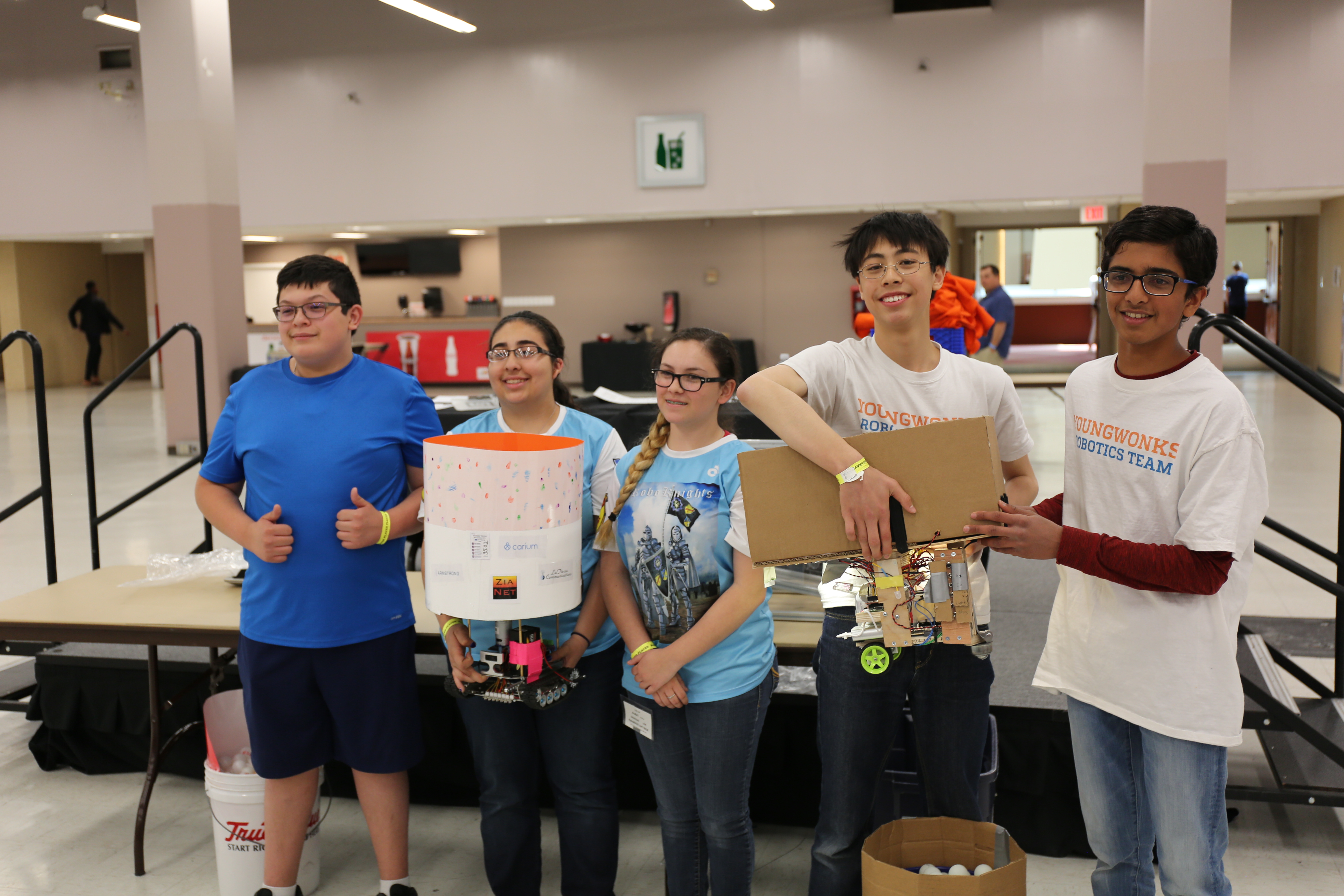RoboRAVE
Oliver has been a competitor in the RoboRAVE International Robotics Competition since 8th grade. Unlike the FIRST and VEX robotics competitions, RoboRAVE does not force players onto any one platform. This lowers the bar of entry and makes for a fairer competition. While a FIRST robotics team costs approximately $20,000 a year, our RoboRAVE robot (pictured below) won at the international level with about ~$150 is parts, most of which we found lying around in the garage!
Competition
One of the great things about RoboRAVE is that the events are not “bracketed”—anybody can attend any event. In fact, due to an emergency scheduling change of the RoboRAVE California event, we attended (and won!) the RoboRAVE USA event before the California one.
RoboRAVE California, our local competition, is usually held in a venue in or near the Silicon Valley.
RoboRAVE USA (now renamed to RoboRAVE North America to allow teams from Mexico) is held in Albuquerque, New Mexico.
RoboRAVE International switches countries every year. We competed the year it was located in the United States (in Albuquerque, NM).
Oliver is a member of RoboRAVE’s Teen Council, a group of competitors selected by RoboRAVE’s leader (Russ Fisher-Ives) to suggest new robotics challenges.
The Team
Chaitu Nookala and I were “Team Untitled” (a name based on an inside joke) for RoboRAVE California, RoboRAVE USA, and RoboRAVE International.
Chaitu and I in 8th grade (RoboRAVE USA, middle-school division, held in Albuquerque, NM):

Chaitu and I in high school with another RoboRAVE team (RoboRAVE International, high-school division, also held in Albuquerque, NM):

A list of our RoboRAVE wins:
- RoboRAVE California
- 2016 - 1st place in Middle School LF (note: due to scheduling change, this event was held after the USA event)
- 2017 - 1st place in High School LF - rewrote our entire codebase into C++
- 2018 - 1st place in High School LF - 2nd place in Presentation - redesigned the robot
- 2019 - 1st place in High School LF - full teardown and rebuild of the robot with new design
- RoboRAVE USA
- 2017 - 1st place in Middle School LF
- RoboRAVE International
- 2018 - 1st place in High School LF
We are also the only team in RoboRAVE history to successfully complete the so-called “Big Kids” line-following track, a deviously complicated line-following track designed to confuse robots. It’s called the “Big Kids” track because it was a test track for students beyond high school (although we solved in high school). The video of our robot successfully completing the “Big Kids” track is below. The man speaking off-camera is Russ Fisher-Ives, RoboRAVE’s founder/leader, talking about the man who designed the track.
ThE SeCrEt oF OuR SuCcEsS
We have been asked countless times why our robot was so successful. Here are the steps to build a similarly awesome robot:
1) Practice
2) Practice
3) See #2.
We’re not joking here! To build a robot that works reliably, it’s imperative that you perform hundreds of hours of testing so that every failure case can be documented and fixed.
The other ingredient in our robot’s success is more practical: a camera. RoboRAVE rules explicitly allow any sensor on line-following robots. However, until our robot, teams had used only color sensors for the line-following challenge. Our introduction of a camera showed everyone that unreliable color sensors could be replaced with cameras.
Since we believe strongly in the RoboRAVE ethos of sharing knowledge, we gave a presentation at RoboRAVE California that explained exactly how our robot works. A year later, we were pleased to see a proliferation of camera-based robots that built upon our design. That presentation is below (updated for the most recent revision of our robot). Feel free to learn from it, and contact me if you want advice on RoboRAVE! I’m happy to help.
More Technical Details
The complete technical explanation of how the robot’s electronics and software worked is available in my Maker Portfolio, along with details of other projects. You can download a PDF of that portfolio here.